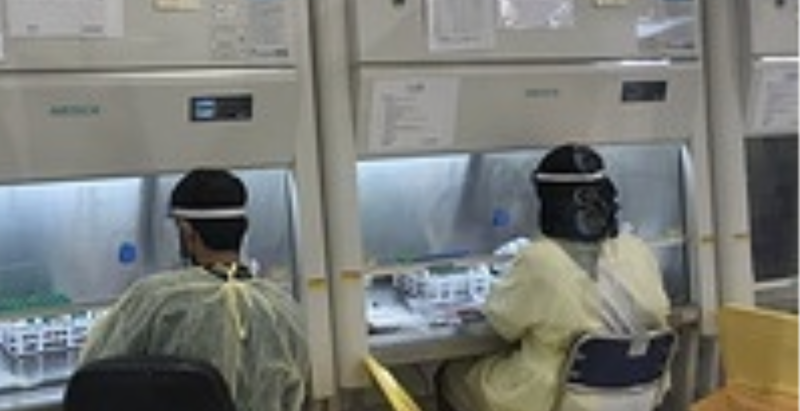
A Saudi Arabian journey in influenza surveillance
Area of Work Influenza - Date: 13 January 2023 | Region Eastern Mediterranean Region - Country Saudi Arabia
Since its establishment, the Kingdom of Saudi Arabia has prioritized capacity-strengthening for influenza surveillance to protect and save lives. The past decade has seen a redoubling of efforts in the face of new respiratory pathogens, with recent achievements including a nationwide integrated surveillance system and the recognition of the Saudi Arabian National Influenza Centre.
Every year, millions of pilgrims visit the holy city of Makkah Al-Mukarramah in the Kingdom of Saudi Arabia during the annual hajj pilgrimage season. Since mass gatherings, such as these, can heighten the risk and spread of infectious diseases, the Saudi Arabian government has long used public health surveillance to protect the health and safety of pilgrims and the population at large.
Stepping up surveillance
In 2009, the H1N1 pandemic reemphasized the importance of surveillance and prompted the establishment of a surveillance programme for influenza and other respiratory pathogens that was initially case-based and later used aggregate data.
In 2012, the Ministry of Health launched the Health Electronic Surveillance Network (HESN), a web-based surveillance system connected to all health facilities in the Kingdom. HESN was later upgraded to HESN Plus and activated to all health facilities in the beginning of 2022, to include comprehensive and advanced methods of surveillance.
In 2017, the Kingdom of Saudi Arabia launched the Sentinel Surveillance Program in 15 sites (nine hospitals and six primary health care clinics) across six regions. By 2021, this programme had expanded to include 50 sites in 20 regions.
In 2022, following the successful implementation of the National Influenza Surveillance Development Plan during the COVID-19 pandemic, the Kingdom introduced its most advanced surveillance system yet: the Integrated Influenza Sentinel Surveillance System (IISS). The IISS includes 100 sites (30 hospitals and 70 primary healthcare clinics). It combines on-site molecular testing for influenza and respiratory syncytial virus with COVID-19 rapid testing and training for healthcare providers. All test data are sent to the Public Health Laboratory at the Public Health Authority for subtyping, genetic sequencing, and sharing.
An important part of the IISS is the COVID-19 National Genomic Surveillance Program, which tracks the spread of SARS-CoV-2 and ensures that any new variants are detected early.
A National Influenza Centre
In March 2022, WHO recognized the Public Health Laboratory at Weqaya as a National Influenza Centre (NIC), adding the Kingdom of Saudi Arabia to the Global Influenza Surveillance and Response System (GISRS). The new NIC serves as the Saudi Arabian reference laboratory. It supports WHO in influenza preparedness and response, reports data through FluNet, conducts surveillance activities, and sends specimens to the WHO Collaborating Centre to inform recommendations on influenza vaccine compositions.
Moving Forward
During the 75th World Health Assembly in Geneva in May 2022, the Kingdom of Saudi Arabia co-hosted with the United States of America a side event celebrating the 70th anniversary of GISRS and invited governments and multiple international organizations to share their experiences, successes, and lessons learned. Future plans include: leveraging digitalization to advance surveillance efforts, building partnerships with regional and global institutions, and supporting surveillance-driven research and innovation.
Please click here to read the original article